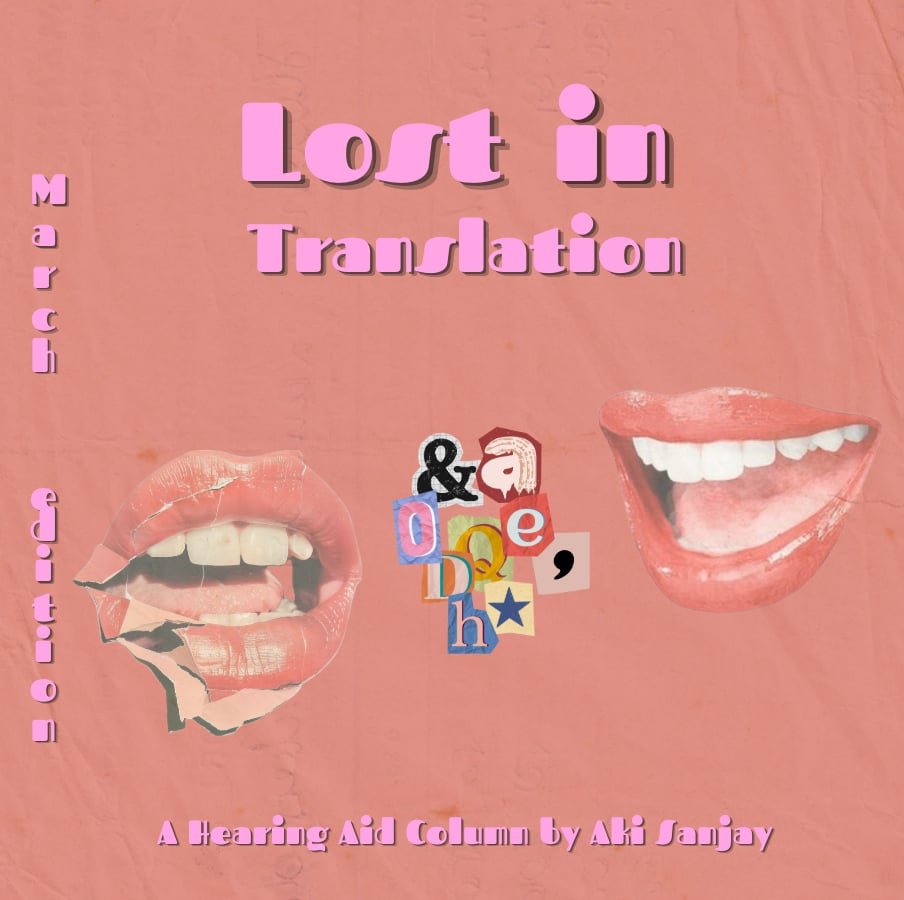Lost in Translation: Hip Hop
By: Aki Sanjay
“Rap is something you do; hip hop is something you live,” states New York-based musician KRS One. His sentiment is a shared one; hip-hop has always been more than just a musical style. Rather, it is a cultural movement that encompasses multiple styles of art alongside history and storytelling. It embraces a range of artistic elements, from rhythmic, rapid-fire songs to gravity-defying dances, but more importantly, it has gone beyond them to become a means for “seeing, celebrating, experiencing, understanding, confronting, and commenting on life and world.” It is, as KRS One says, a way of living - a way of being.
Hip-hop is also global. It began in the early 1970s in the Bronx borough of New York, brought up in a world of economic depression, political discourse, and a society echoing with a post-industrial slump. At the time, New York City was experiencing a severe economic collapse due to the decline of the manufacturing industry and the slow segregation of certain boroughs. The white middle class moved into the suburbs to escape the downturn, shifting neighborhood demographics and worsening neighborhoods largely populated by African-Americans, Puerto Ricans, and Caribbean immigrants. The urban despair resonated through every street corner: businesses shut their doors, restaurants closed, and the youth of the Bronx found themselves without employment or entertainment. As a result, they turned elsewhere, finding in the newly abandoned parking lots and buildings a perfect setting for block parties. It was at one of these parties, in August 1973, that hip-hop emerged: DJ Kool Herc introduced the concept of the break, isolating and extending percussion breaks in songs. His techniques “filled the floor with dancers,” and inspired a wave of DJs to put their own spin on well-known songs. Driven by the advent of early “Sound Systems,” inspired by Jamaican culture, hip-hop exploded from the streets of New York to the world stage.
When the global wave of hip-hop reached UK shores, it was received with instantaneous praise: the UK fell in love with hip-hop music, and immediately started to fracture and twist it into new shapes, bringing in a uniquely British influence. The story of British hip-hop is commonly thought to have begun in 1979 with the release of Sugarhill Gang’s “Rapper’s Delight,” which burst into the UK charts at number 3. It was particularly well received by African and Asian immigrants, who resonated with the sense of purpose and strength inherent to hip-hop. The genre’s range and various influences offered a sense of freedom that was not easily found in Thatcherite Britain. Hip-hop became a voice for marginalised communities, finding a unique voice that continues today.
In Scotland, hip-hop exists in the margins of popular music, barely a footnote in the history of Scottish pop music. Despite a growing interest in the genre, the last twenty years has exhibited a cycle of buildup that has led to little consolidated growth. As Dave Hook writes in his book Made in Scotland, the “idea of local artists making hip-hop is still often met with ridicule and derision.” A division between authentic reflections of Scottish culture and hip-hop remains, despite the longstanding use of hip-hop as a vehicle of social expression – but recent years have changed this. As Richy Muirhead, founder of the Scottish Alternative Music Awards (SAMA) and the co-founder of Scotland’s hip hop conference Pitch Scotland, said in 2021, Scotland’s hip-hop scene is growing. Now, what is essential is finding the resources to match its growth: “We need to create that infrastructure,” said Muirhead, “because there’s definitely an ambition and an appetite here.”
To kickstart hip-hop’s growth in Scotland, Muirhead created HANG (Hip-Hop Aimed Networking with Grime), Scotland’s first hip-hop conference. Over the course of the event, participants wre dazzled with euphoric live performances from Scottish artists, including Ayrshire rapper Bemz, and discussion panels which broke down the biggest myths and questions surrounding the hip-hop scene. Additionally, Creative Scotland allocated a bursary with a starting grant of £15,000 to support emerging hip-hop artists – this project is ongoing, with grants of between £500 to £1500 allocated to over 20 individuals each year.
Despite the persistent claims that Scotland doesn’t have a strong hip-hop history, the music and culture of hip-hop have been a thriving element of Scottish subcultures since the 1980s. The “energy, artistry, community spirit, and political expression” of hip-hop greatly inspired young Scots to speak up against social injustice, through words and through music. The turn of the century saw a rise in homegrown hip-hop records; Scots embraced their own accents but took inspiration from the Bronx, crafting a new style that grew immensely popular in underground music scenes. These early artists, including Steg G, Mistah Bohze, and Shelltoe Mel, performed at HANG, hoping to inspire a new generation of artists to carry on the hip-hop craze. Community is key, shares Glaswegian rapper Darren “Loki” McGarvey: “At first I thought I was the only rapper in Scotland, [then] I learned I was part of an illustrious community, a complex weft of different phases and styles.”
Scottish hip-hop also strives to be Scottish. Collaborative process is an essential part of Scottish hip-hop tradition; while English rap is becoming increasingly collaborative, the Scottish scene is historically so, with many larger artists working with rising stars across the country. Ola Aisanya, better known as Chef, is determined to be Scottish, stating that though he is “obviously inspired by London grime…Scottish artists are striving to make international sounds.” The goal, of course, is global recognition, putting Scottish hip-hop traditions on the world map.

